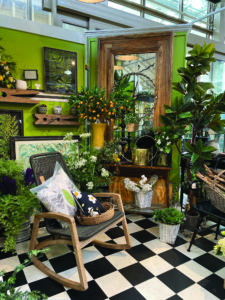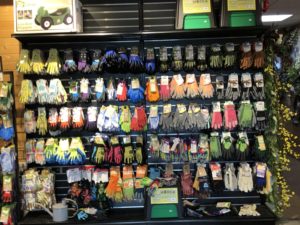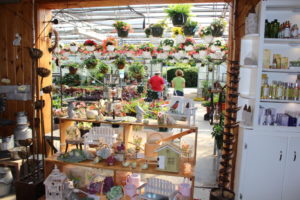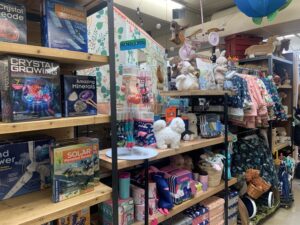Home Maintenance
Once upon a time, the summer trade shows were open season for garden center buyers. See home décor. Aim. Buy.
And while the aisles in Atlanta, New York, San Francisco and points in between are still packed with candles, coffee table books, pottery and picture frames that might fit the merchandise mix of a specialty garden shop, there are a lot more hunters in the woods.
In the 1990s, after all, you could stack painted 6-inch pots to the ceiling and watch customers shell out $9.99 for the “Italian-inspired” home accents. Home décor and accessories helped to differentiate your garden boutique, adding value to a selection of quality annuals and perennials.
Problem is, your customers may not be carrying the kind of cash they did back in the day before the recession, before September 11. An industry representative recently told me that while the home category stayed afloat and even surged after the 2001 terrorist attacks, the first quarters of 2003 have been dreary.
Americans may be spending more time at home, but that does not mean they are spending more on their home. Some retailers I have spoken with even described the current retail environment as hostile to home décor. How is a retailer to cope with these belt-tightening times?
Finding a Way
The home décor category may be among the most difficult to get under control. Here are nine smart ways you and your buying team can shop the summer shows without abandoning the home décor category.
Review sales. What sold last year? What didn’t? Take your point-of-sale reports with you. If you don’t have the technology to run these reports from POS, survey your staff.
You should survey your staff anyway to capture the anecdotal information they collect from customers. Anyone working the floor day-to-day will hear comments like “I wish you had … ” or “Do you think you might get more of these in?” or better yet “I don’t like those they don’t work.”
One comment does not make a trend. But when you hear comments repeated, take them as free advice.
Walk the floor. I spoke with a retailer who has struggled with trade shows. The problem is not just what to buy but also which to attend, and how many. Shrinking profit margins and unreliable consumer confidence put pressure on the travel budget.
This particular retailer trimmed her travel without slashing it. Cutting too much travel could have forced her into visiting the same suppliers without exposing her to new and unusual products lurking in the depths of a trade show.
Some simple guidelines may help: Nix the overseas trip. New York or San Francisco, but not both. Frugality is the rule on the road.
Make a deal. A trade show may be the best time for your store to place a purchase. Taking advantage of show specials, low or no minimums and free shipping offers could help more than pay for your trip to the event.
Avoid impulse purchases, however. As you walk the aisles, take notes, gather handouts, talk to suppliers. Then skip the $30 per entree dinner out. Grab some takeout and talk to your traveling partner about what you saw that day. By your third day at the show, you’ll be better prepared to write the orders.
Or sleep on it. Nobody said you were required to write orders at trade shows. Many retailers write them well before or well after. Relieved of buying pressure, they use their time to attend seminars and visit with manufacturers to discuss their long-term needs and to share their product wish lists.
Manufacturers agree: They like spending time with retailers. Those conversations help steer their product development. An informal survey at one show last year proved the point: Every manufacturer we talked with said that getting retailer feedback was among their top reasons for exhibiting.
This is especially true in the accessories market, which can react to trends and shifting consumer tastes faster than plant breeders.
Reorder bestsellers. If you’re familiar with zero-based budgeting, you know that sometimes it can be good to build from the ground up.
Forget what you know. Blank slate. This is not the case for retail buyers, especially the home décor category.
Find the bestsellers from the product analysis you conducted in reviewing sales. Reorder them, or at least reorder those that performed at the level you were acceptable with. Did you move five of five wrought-iron candelabras? Were you able to turn 75 percent of the silk shantung throw pillows? Then bring them back. This group of products will account for up to 50 percent your merchandise.
Decline the dogs. Now scratch from your reorder list the squatting-frog place card holders that looked great on the trade show floor but not in your showroom and the paper lanterns that were all torn before you made it through March, not to mention the doormats you fell in love with in Atlanta and gave out as Christmas presents or the clocks decorated with prints of 200-year-old botanical sketches that now grace your back offices.
Part with the pathetic. Sidestep the why-did-I-buys. Chances are, new displays will not move these dogs. And lowering prices will only squeeze your margins. Expand product lines. Remem-ber the pineapple trivets that flew out the door after you ordered just a handful? Or the peony paper plate collections that sold out in two weeks? Some of those items you took a chance on last year could be reordered and expanded upon.
If peonies proved popular on plates, look for the motif on other products: decorative pots, framed art, cocktail napkins. Was red the popular color for pillows? Try the hot hue on trays, leather notebooks and garden sandals.
This category will claim 30 more percent of your merchandise.
Try something new. To find the next bestsellers, allocate up to 20 percent of your merchandise mix to new items. This is where you get to take some educated guesses. Just remember to try items your customers would like not necessarily what appeals to your own taste.
Find local vendors. Just as by using local growers you can stock your store with larger and specialized annuals, perennials and herbs, local craftsmen offer one-of-a-kind home and garden accents. But they are not always easy to find. You may have to seek them out at local crafts events, pottery shows and antique malls.
Retailers we spoke with said the local vendors they worked with were more flexible and in some cases more reliable than big national or international manufacturers.

















 Videos
Videos





